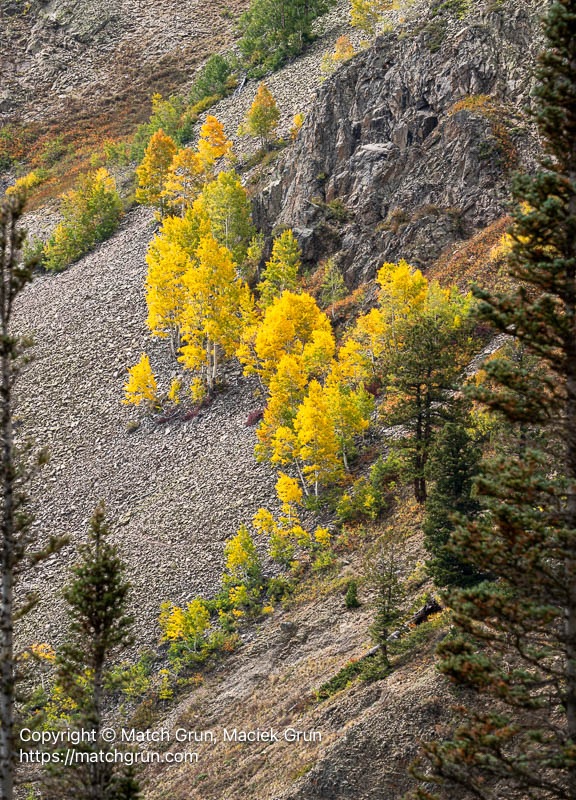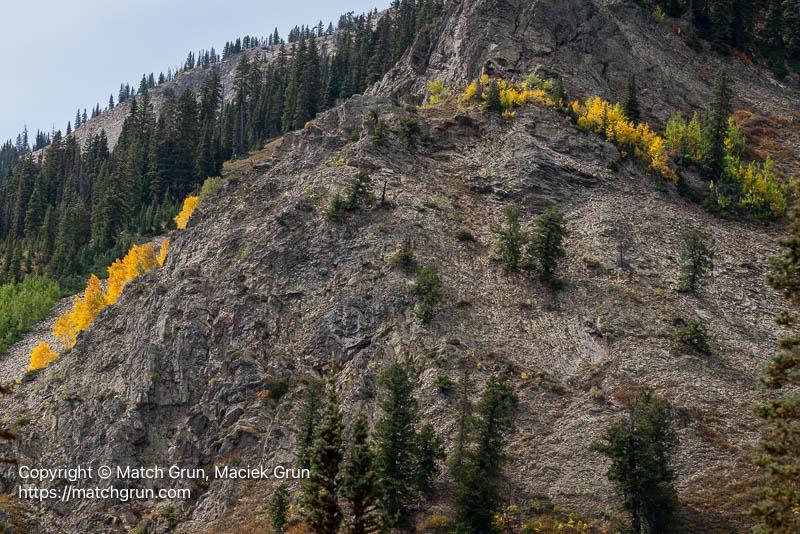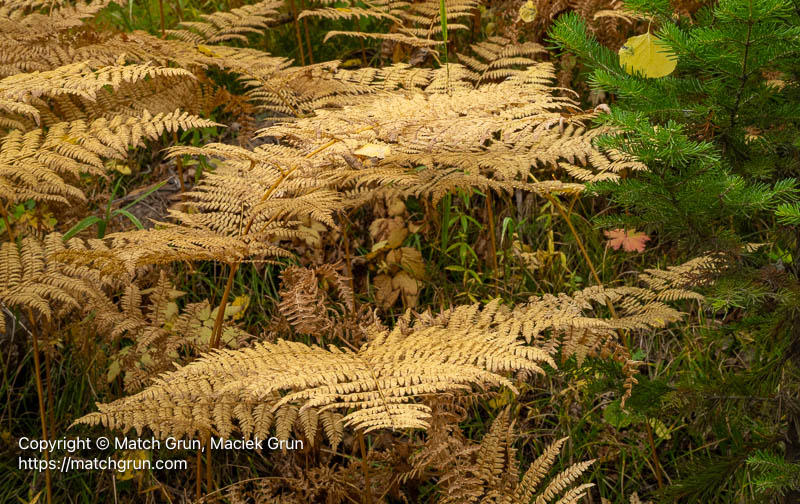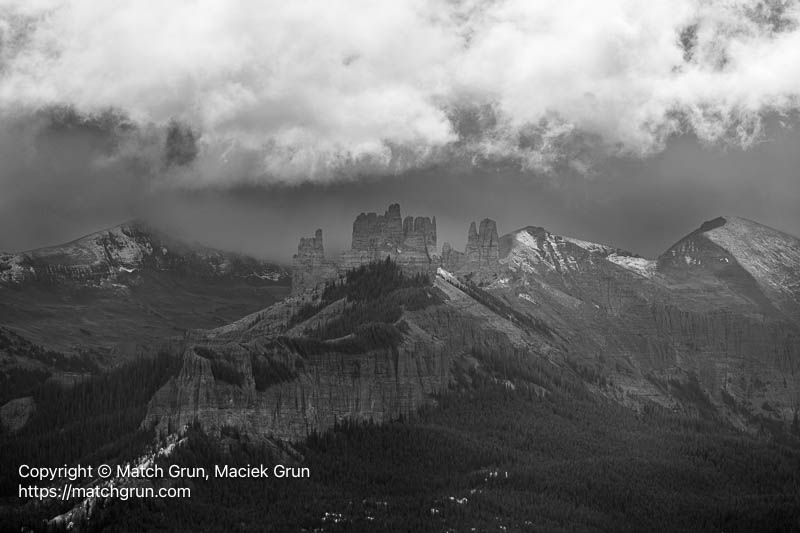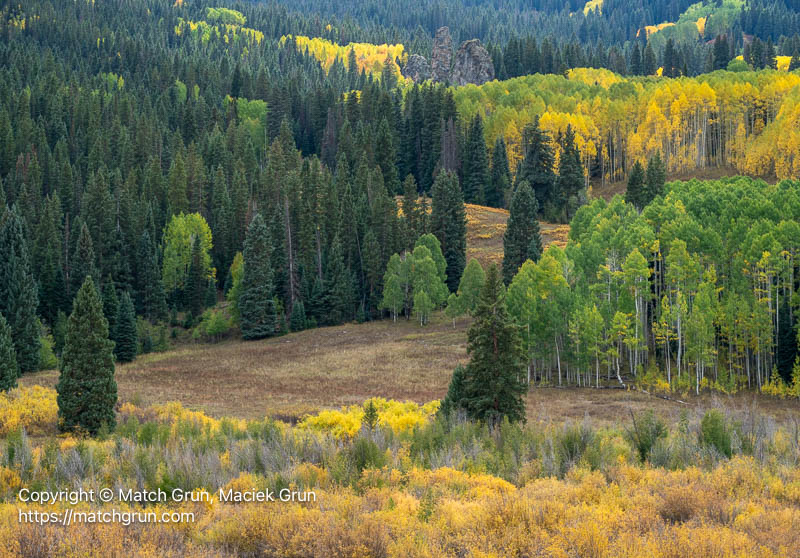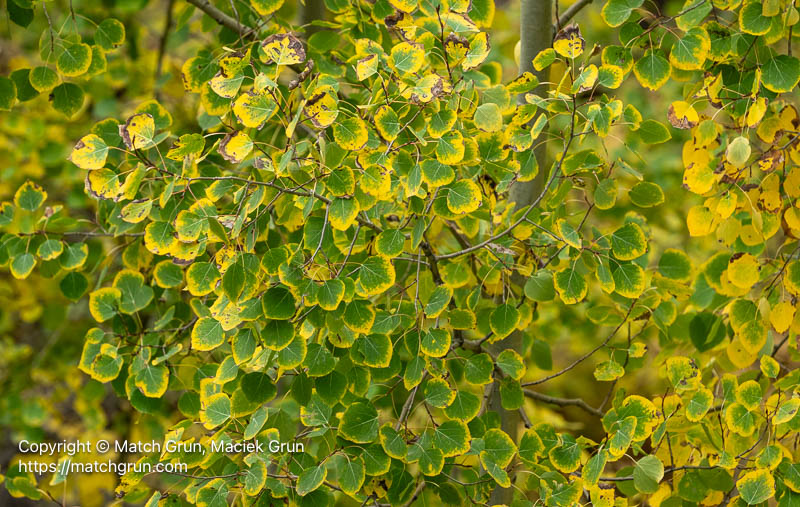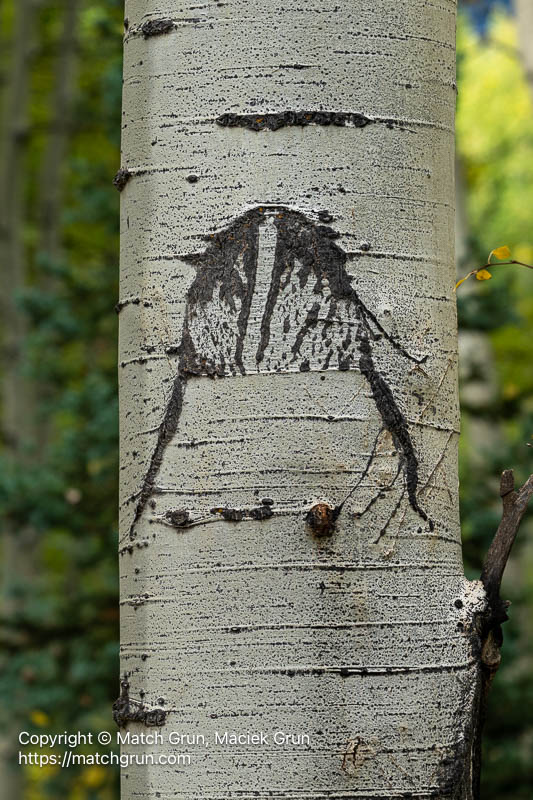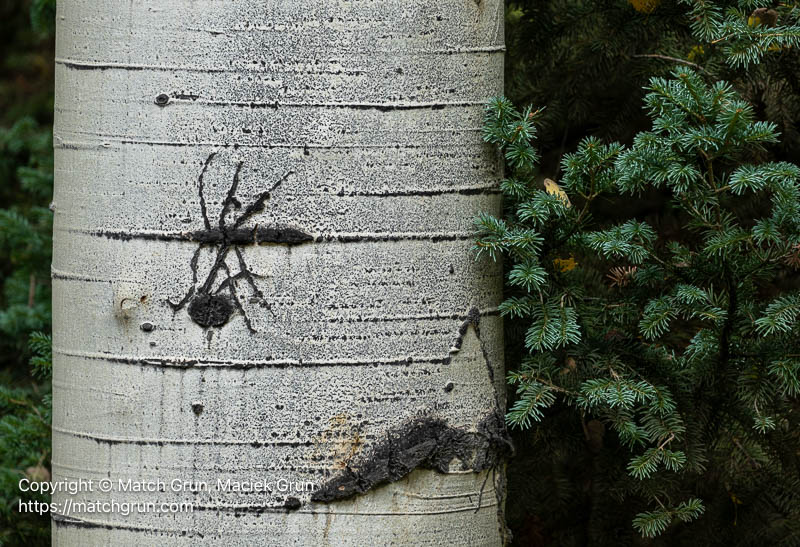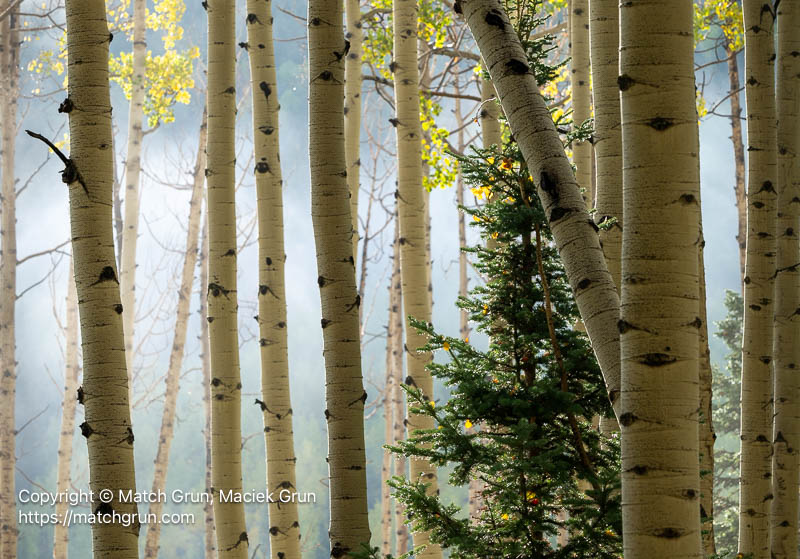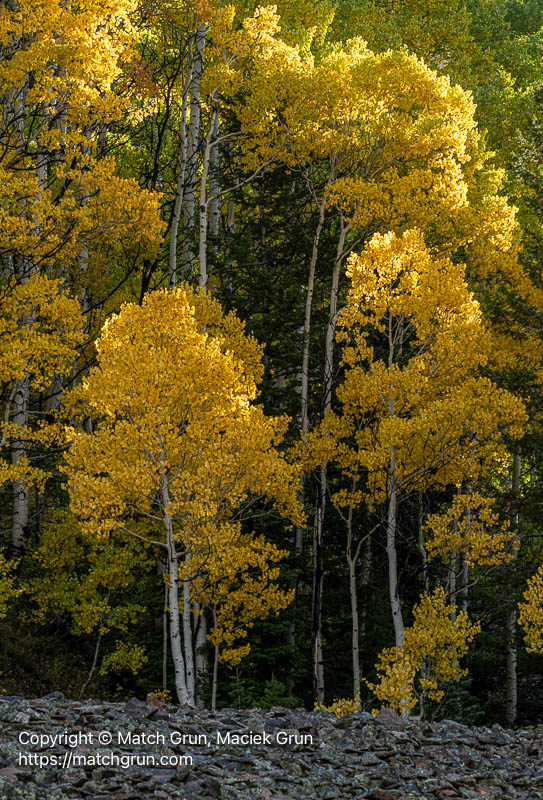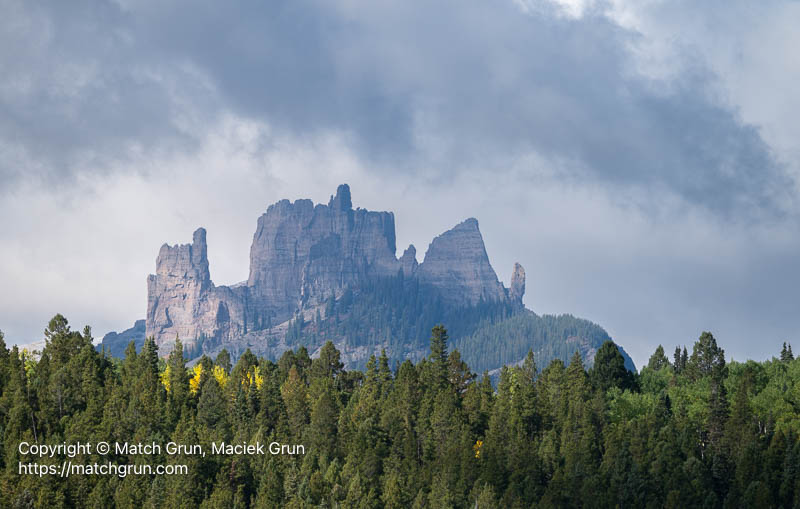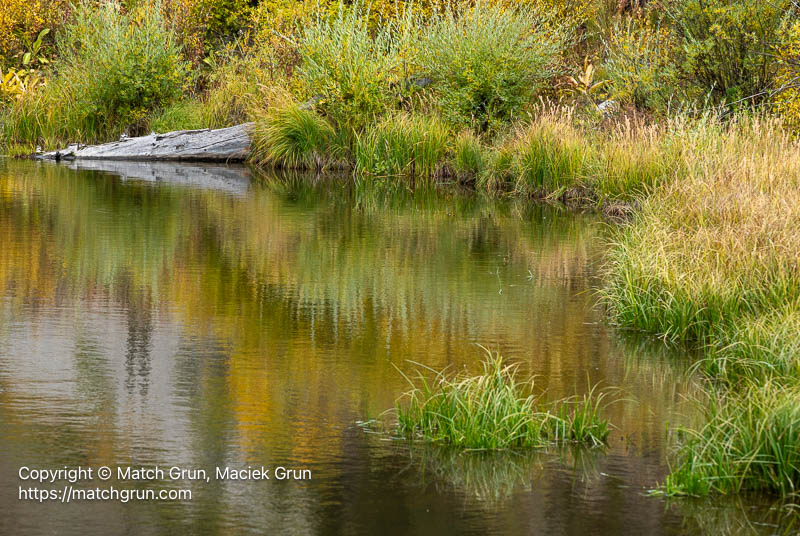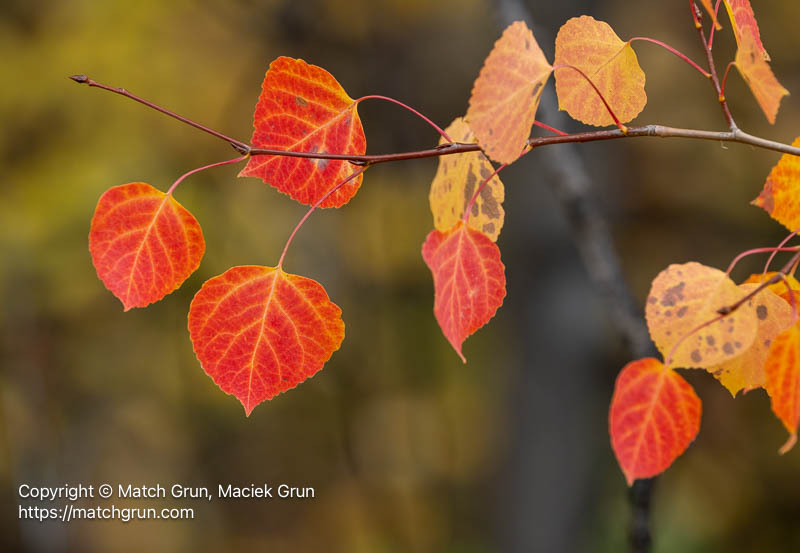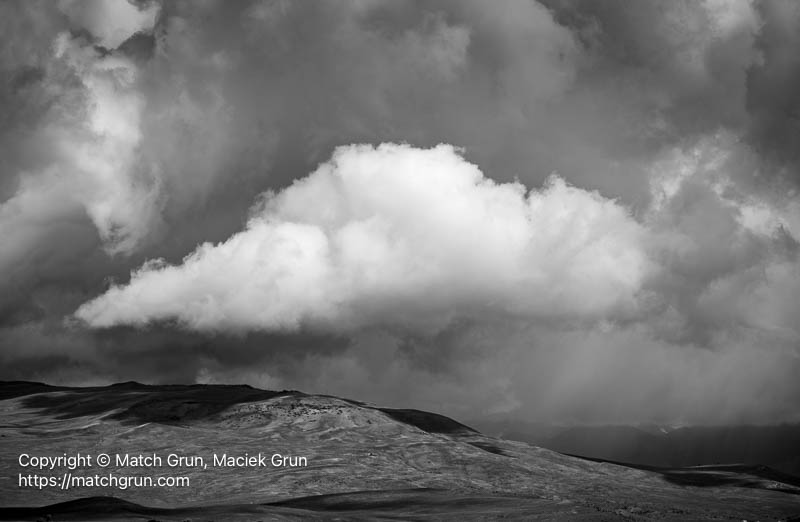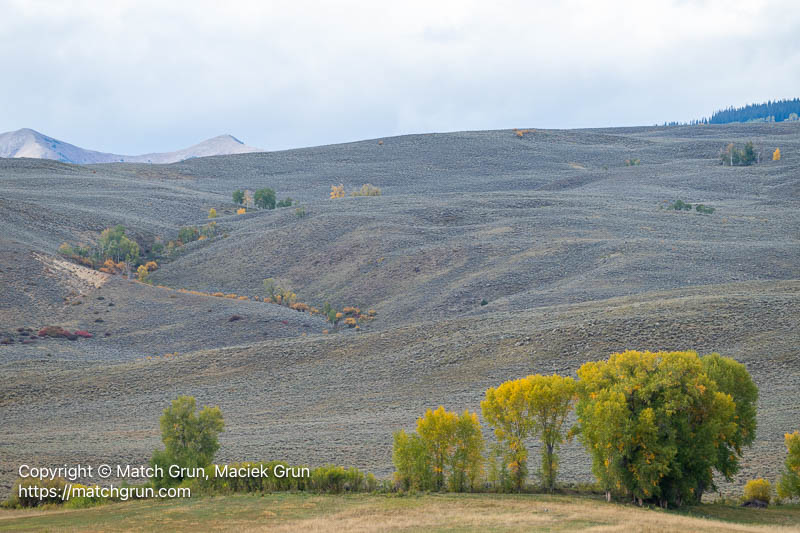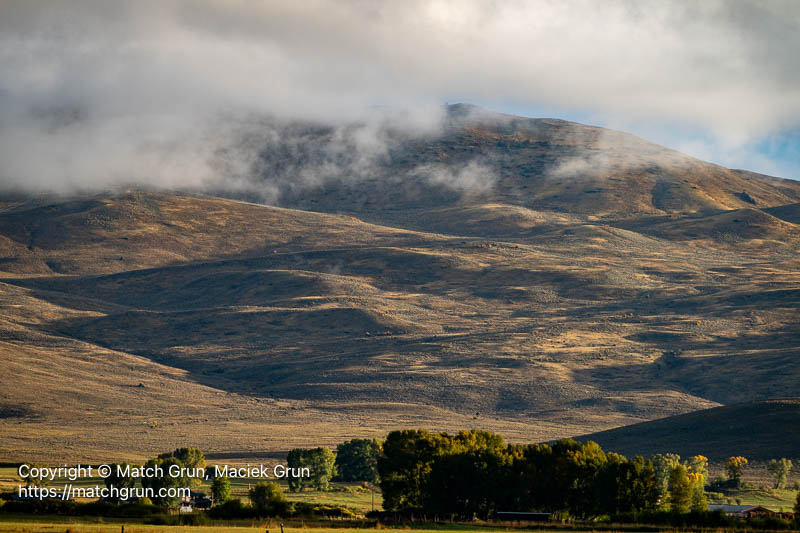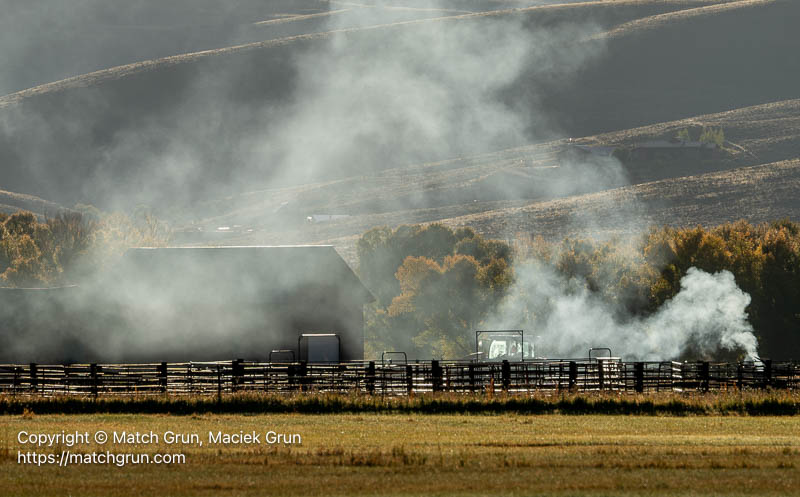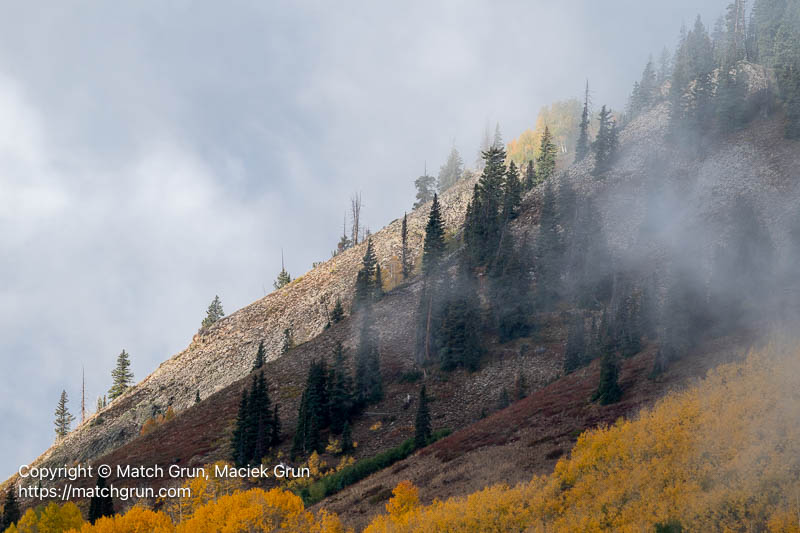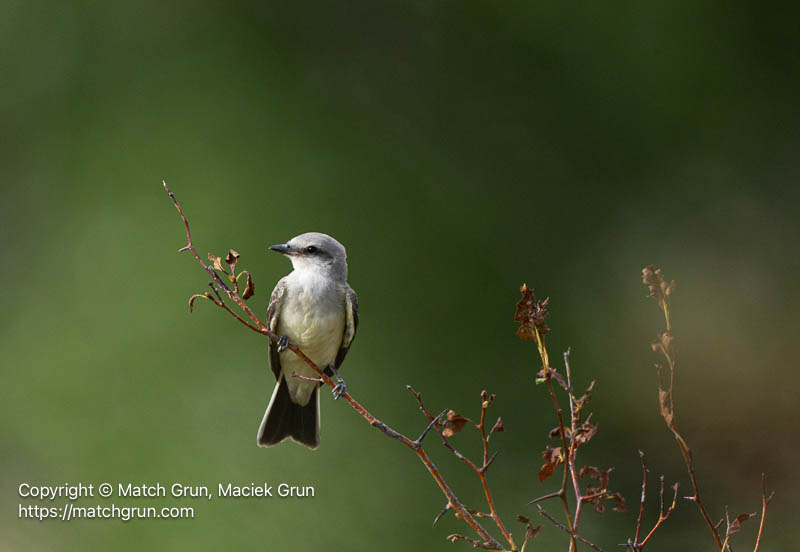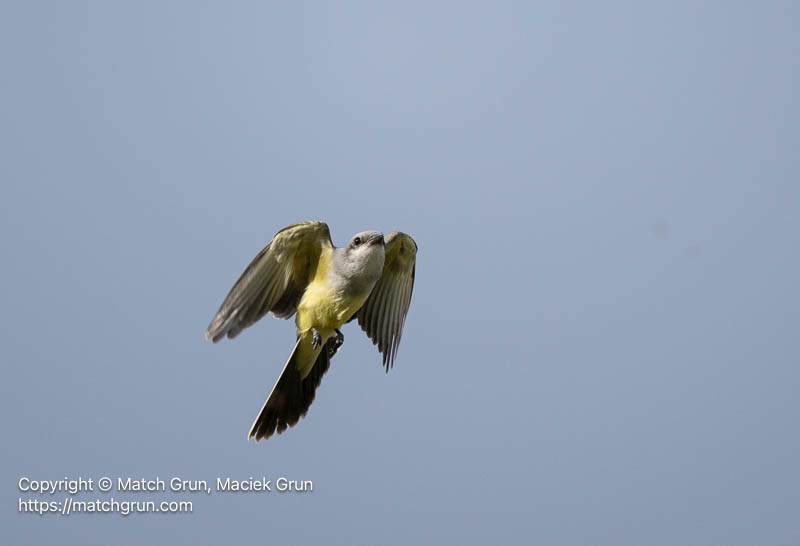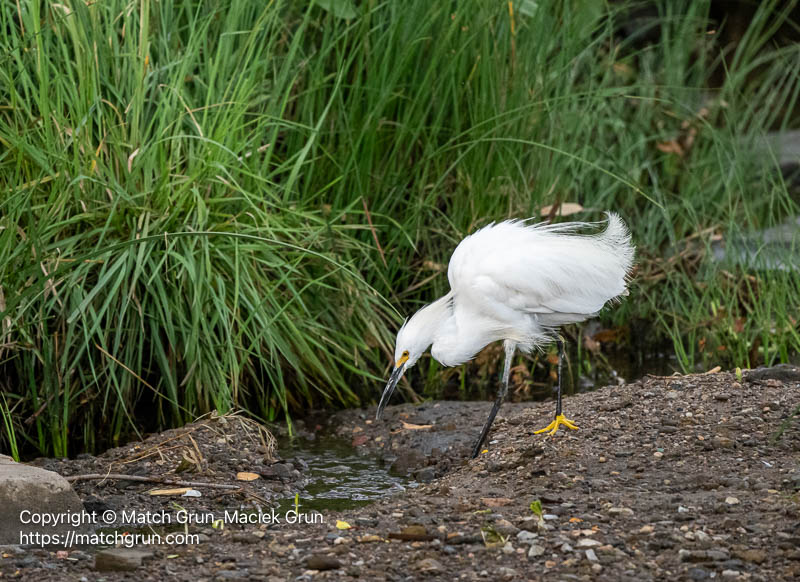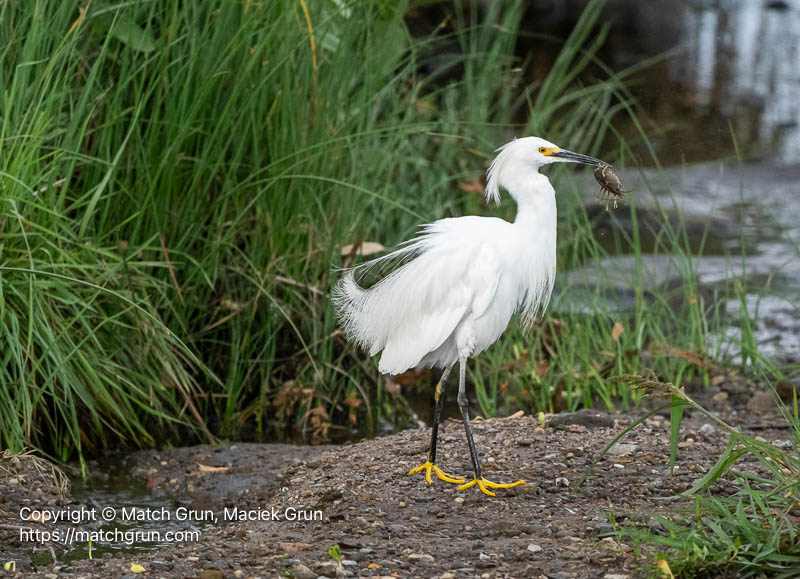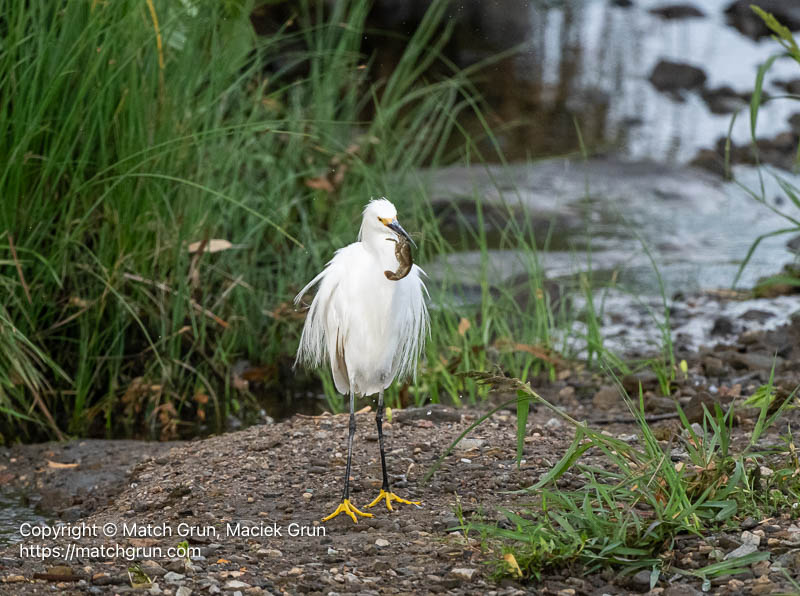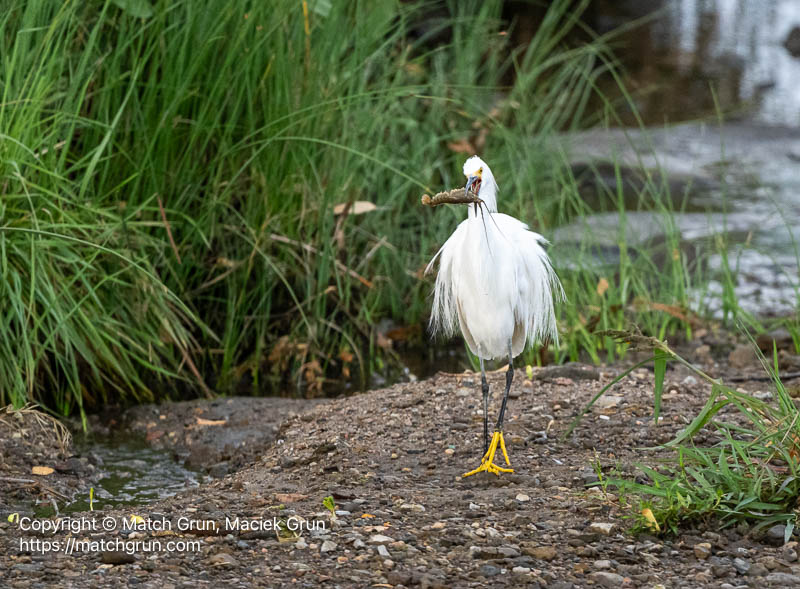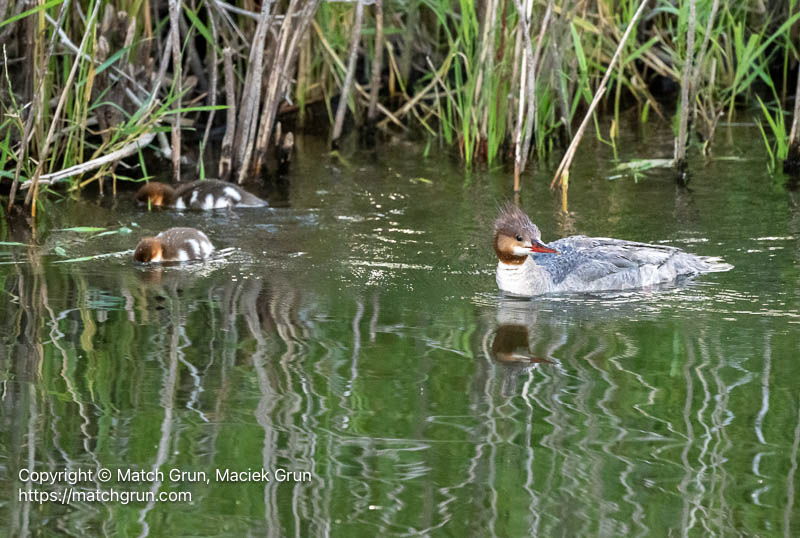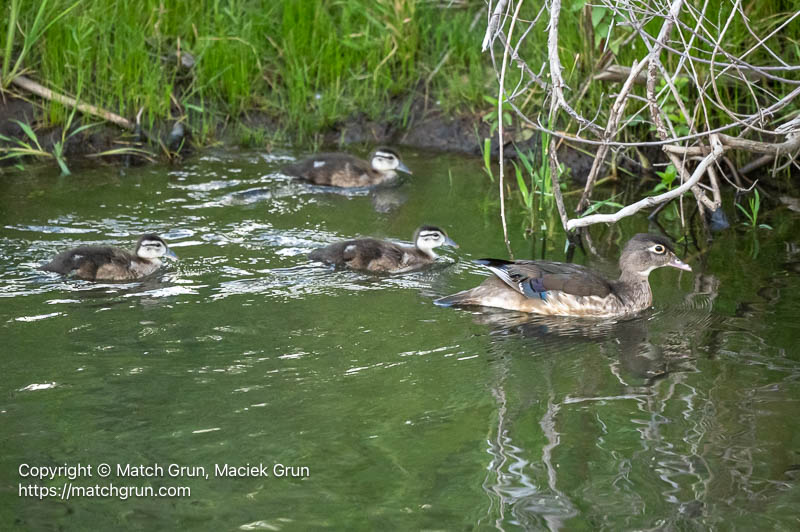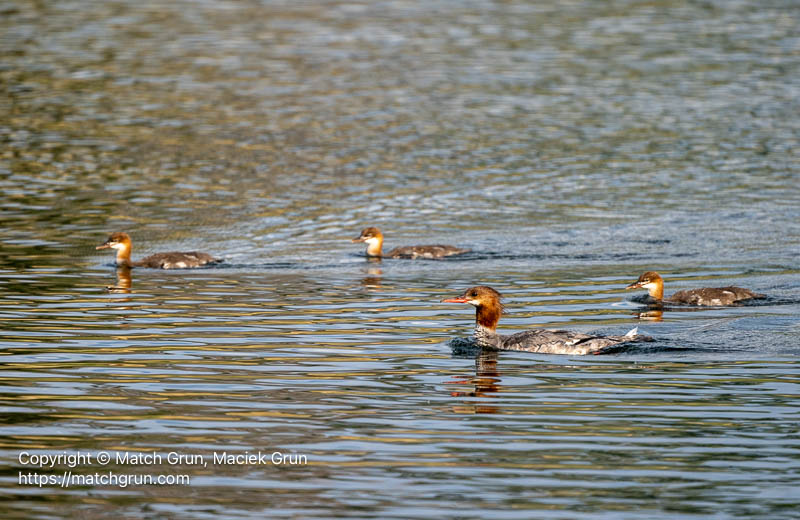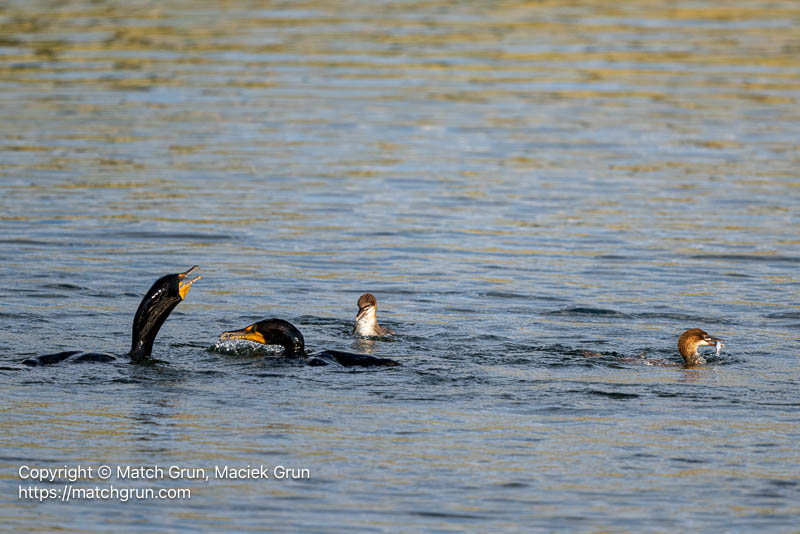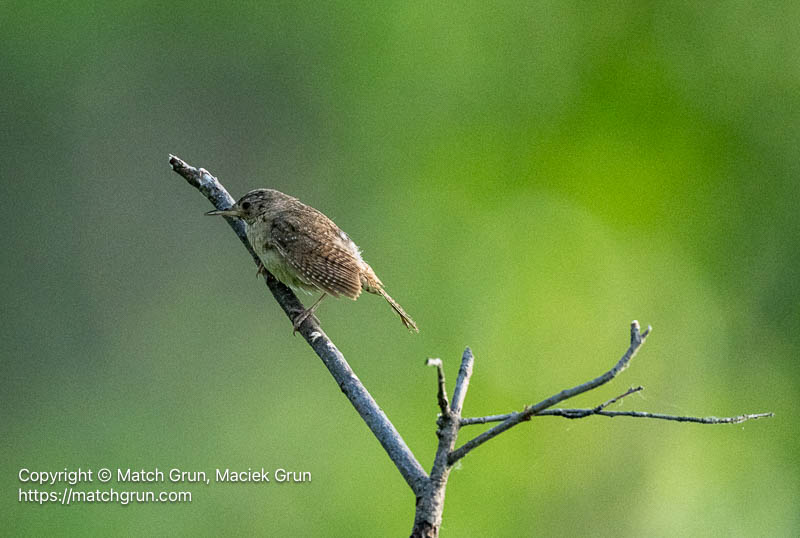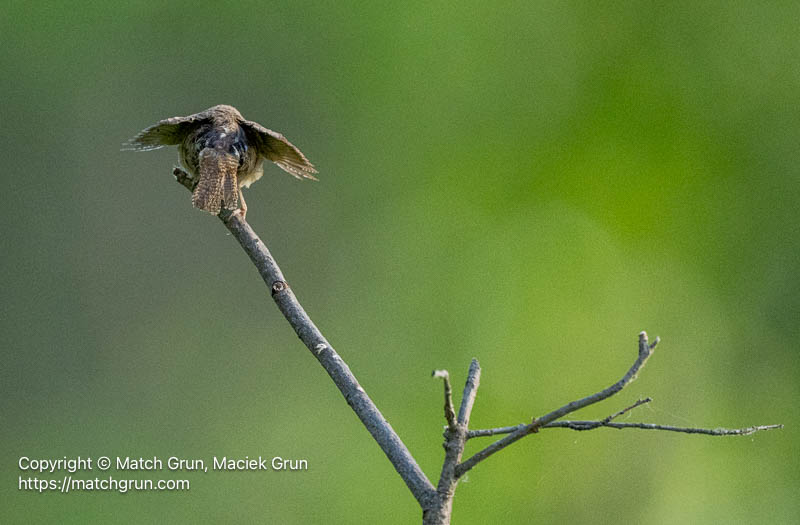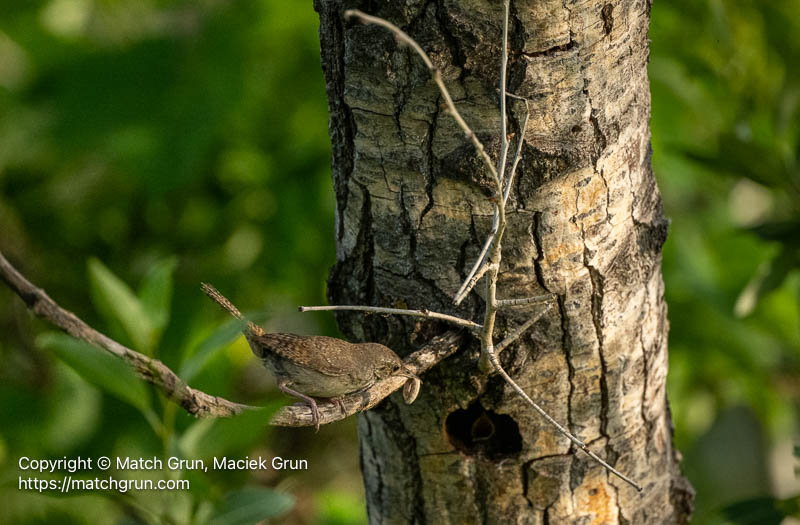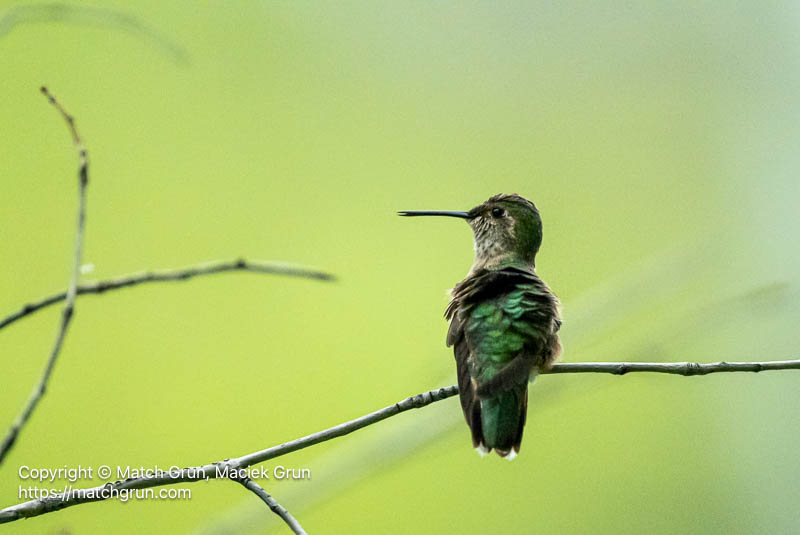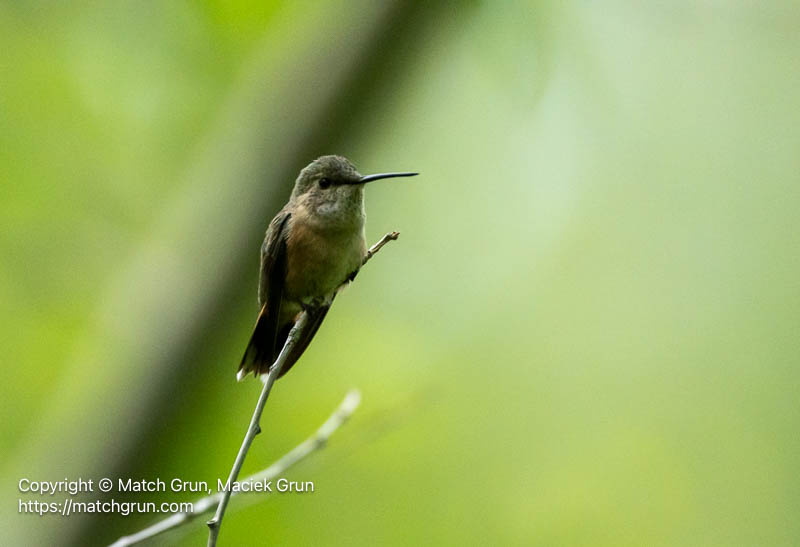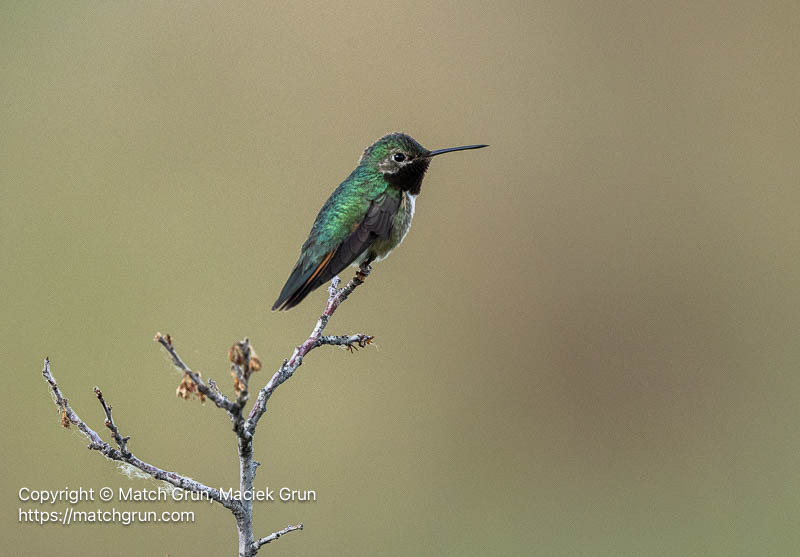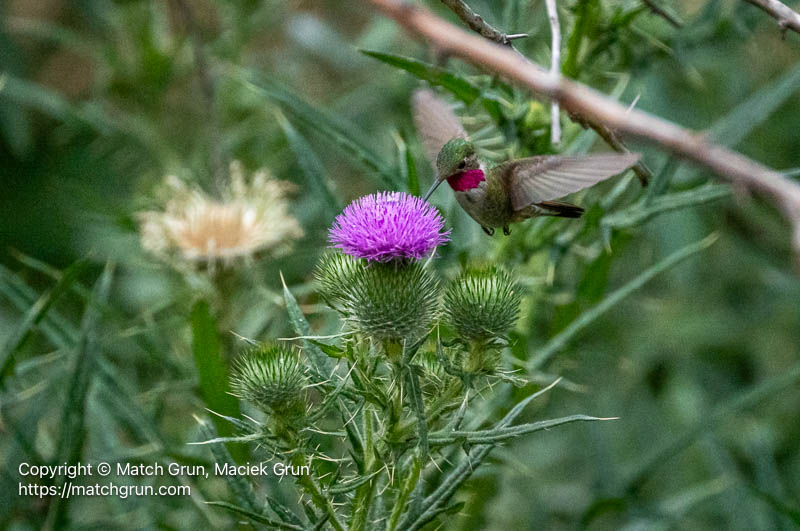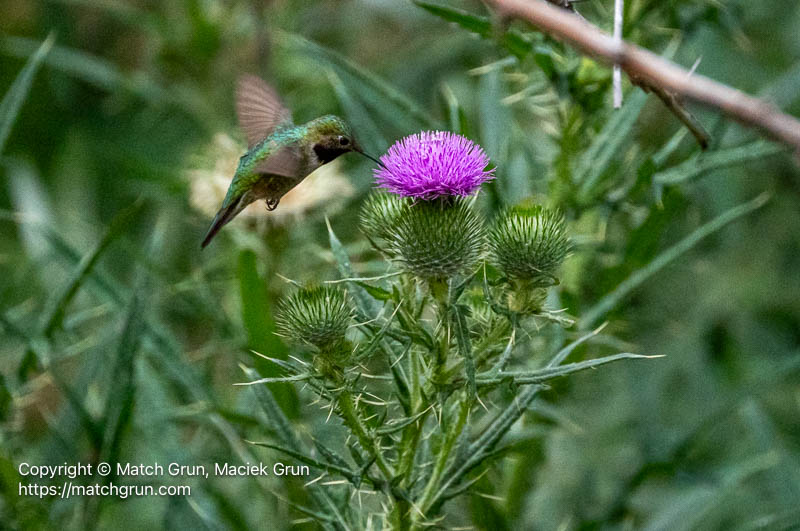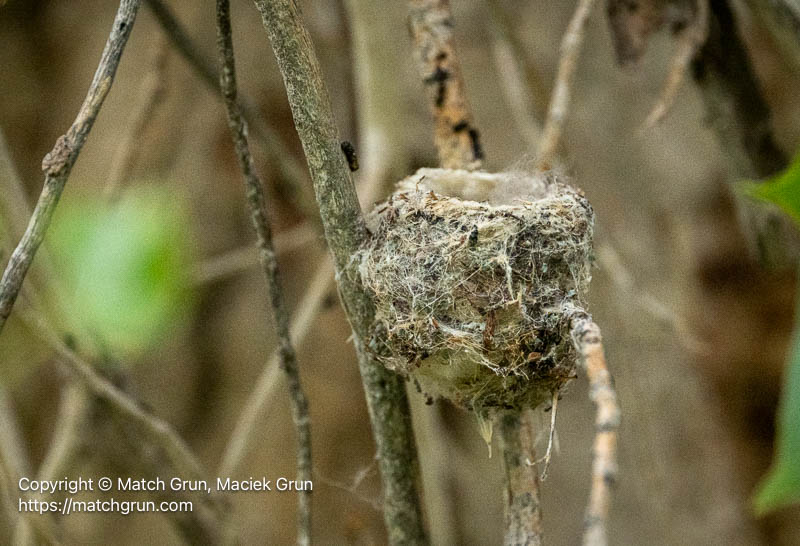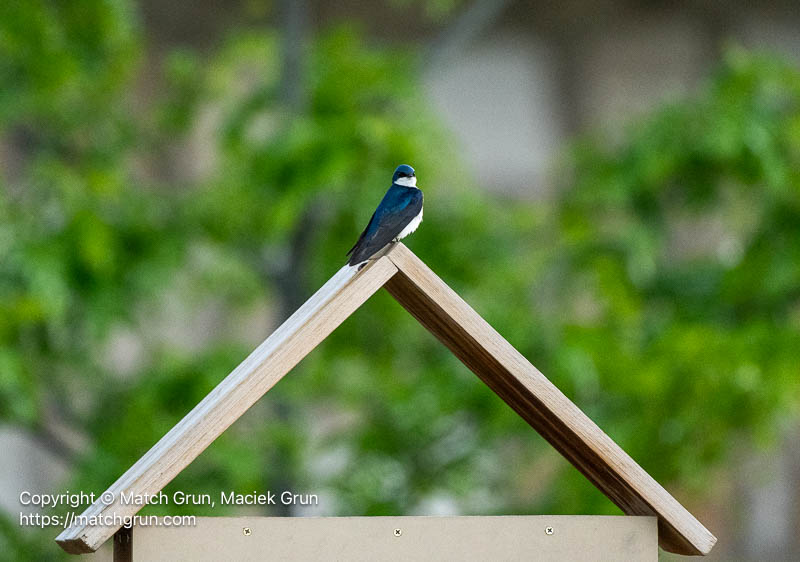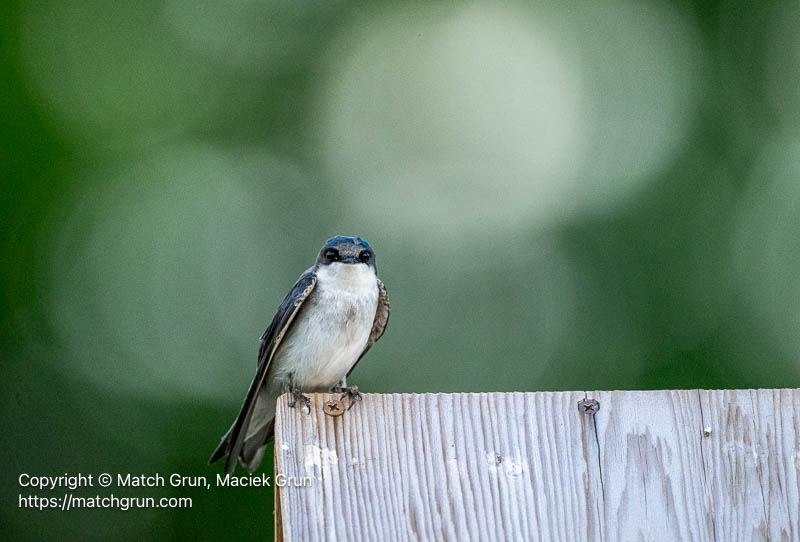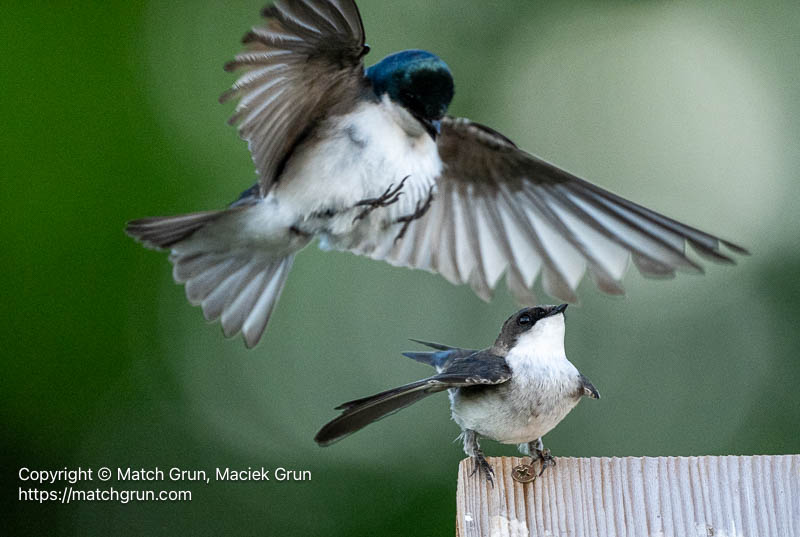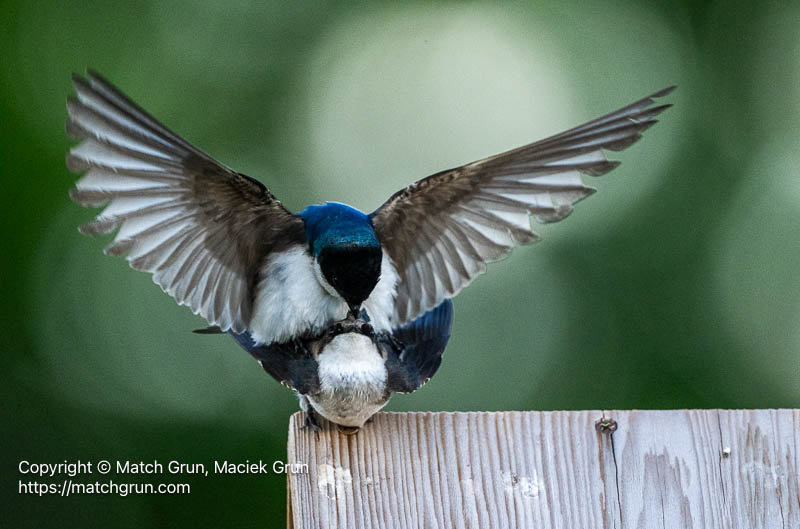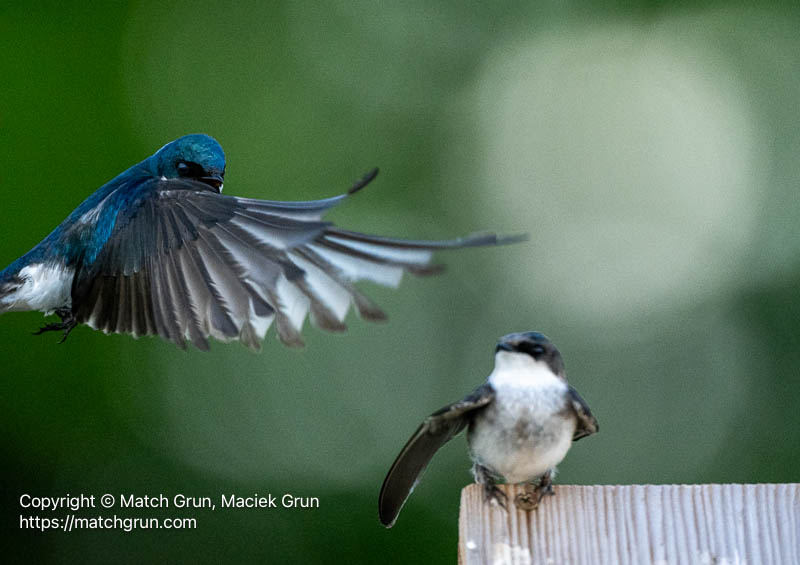Earlier this week, I made another trip to view the fall colors. This started with a stop at Trout Creek, along the roadside leading in to Buena Vista. I frequently stop here to take a break and spend some time by the creek. This area contains some cottonwood trees that grow along the creek.
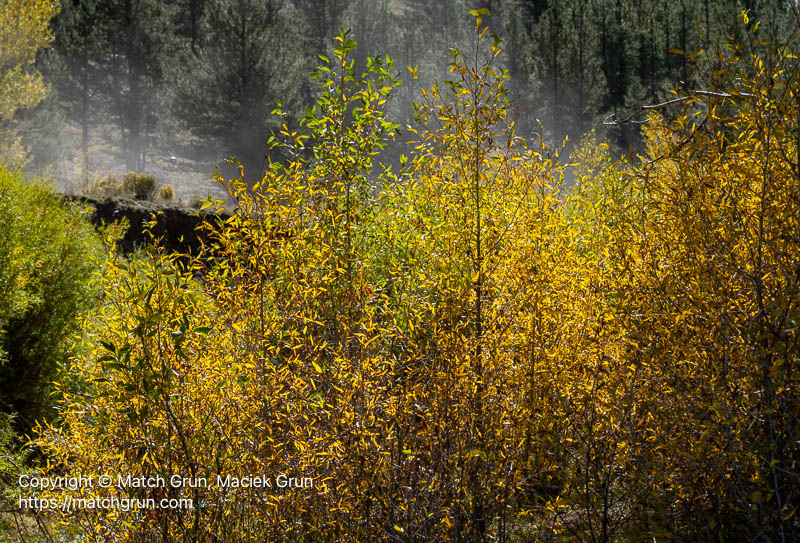
The creek has slow flowing water with watercress growing along the banks and underwater. I found one spot where the creek split forming an island, as it meandered in an S-curve.

In the shade of some bushes and trees, I found watercress growing underwater in the creek. The overhead sun lit up the creek bed, revealing abstract shapes of the green watercress below the surface.
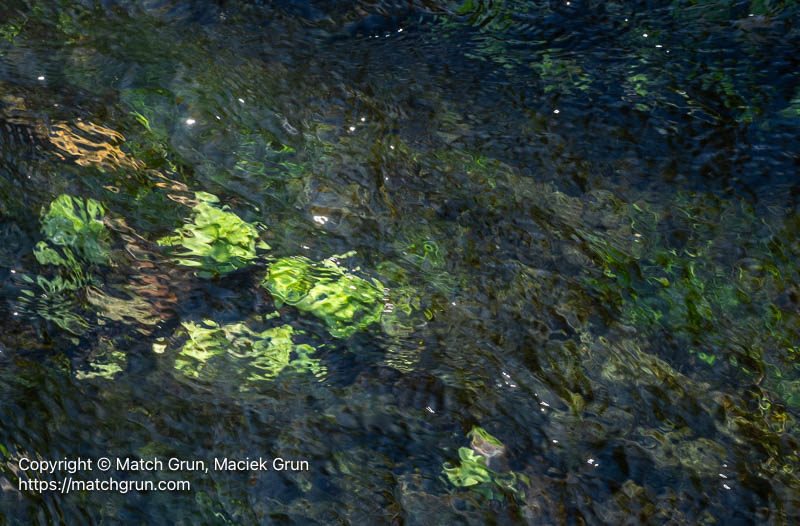
There was a magnificent cottonwood tree that was turning from green to yellow. In this image, I moved to create a backlit image. I chose a small aperture so that the sun was rendered as a sunstar in the final image.

After stopping in Buena Vista for a coffee and muffin, I headed over Cottonwood Pass, reaching Taylor Reservoir. The west side of reservoir borders a steep slope that has several aspen and pine trees. In this image, I was interested in making a image that included reflections of the trees in the water. There was also a light rain shower that created some texture from the falling raindrops.
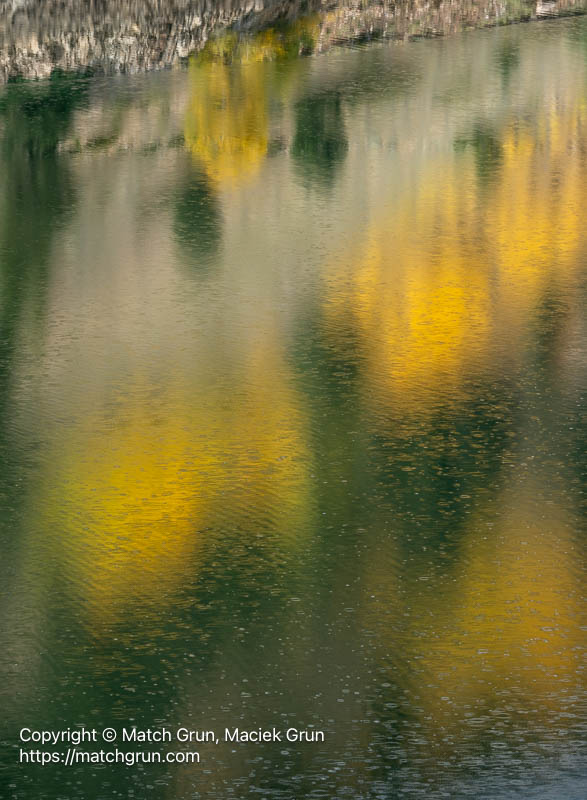
The image below was made near the reservoir’s dam wall. Here some of the lip of the dam and the rocky cliff face was reflected in the water. Also, pine and aspen trees that grew on the steep slope were also reflected by the water.
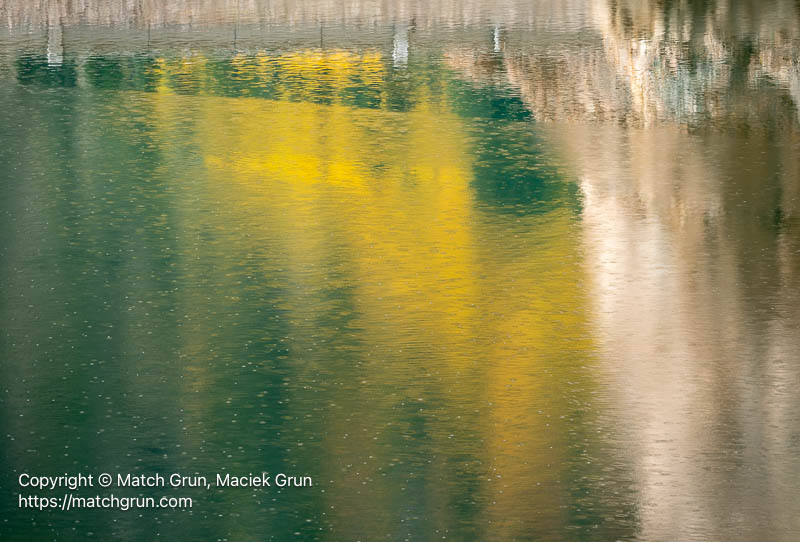
I chose to return to the Ohio Creek valley again. At the roadside were three aspen trees growing in a row. Each tree had different colors of leaves; yellow at the back, then red in the middle, and green in the foreground. Of course, I had to stop for this one. Also, some of the leaves are past their peak color and have turned brown. So four colors in all!
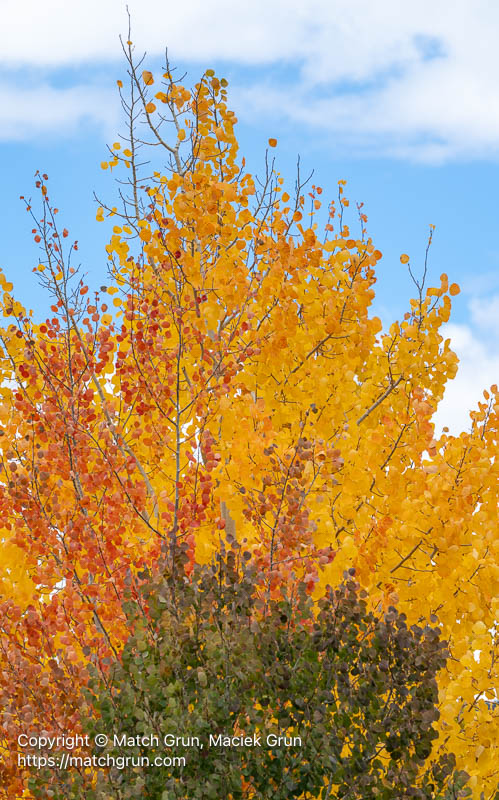
At the base of Ohio Pass, is an aspen forest. The aspen trees at the edge of the sage brush in the foreground created an array of trunks that appears like a fan.
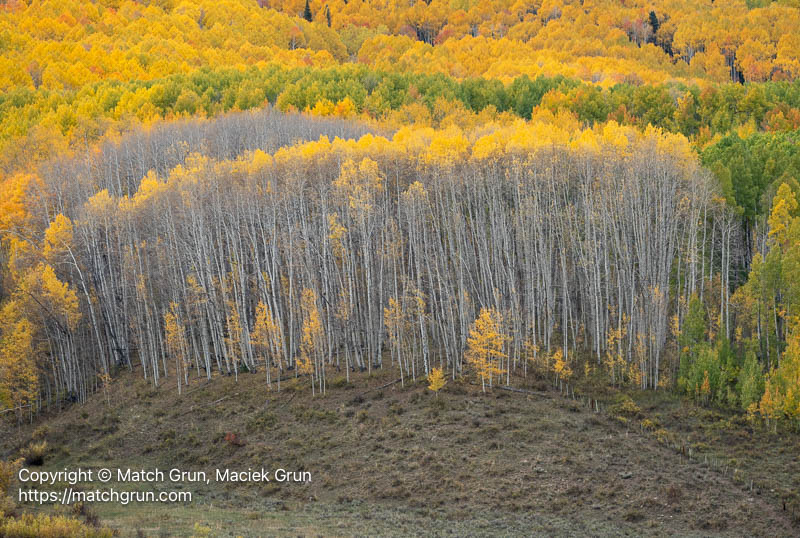
To my left, across from a field where cattle were grazing, there were aspen trees in yellow fall colors, behind the fence line. I took care to include the fallen dead aspen tree trunks and some pine trees behind that little tree at left; this contrasts with the young aspens in full bloom.
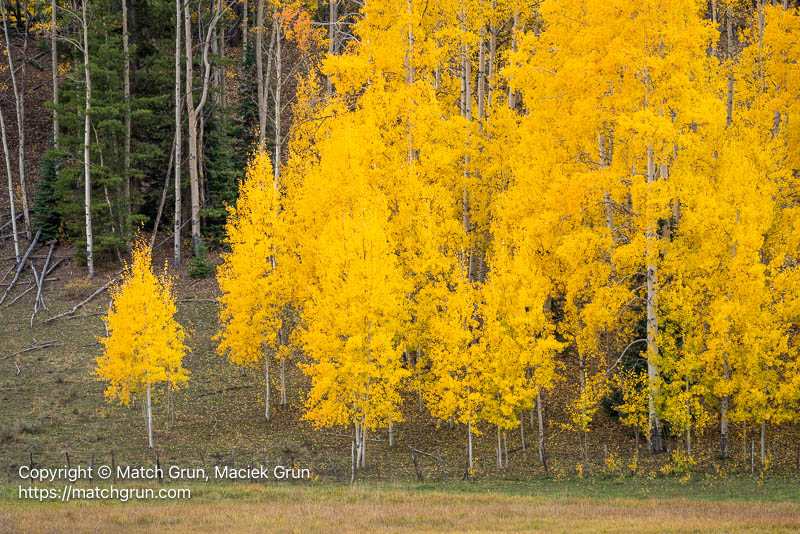
Finally, I stopped along the pass, where ferns were growing at the base of the forest. Here, I setup tripod and made several exposures of different fern plants. Here I used focus stacking to increase the depth of field with ferns that were really close to the camera.
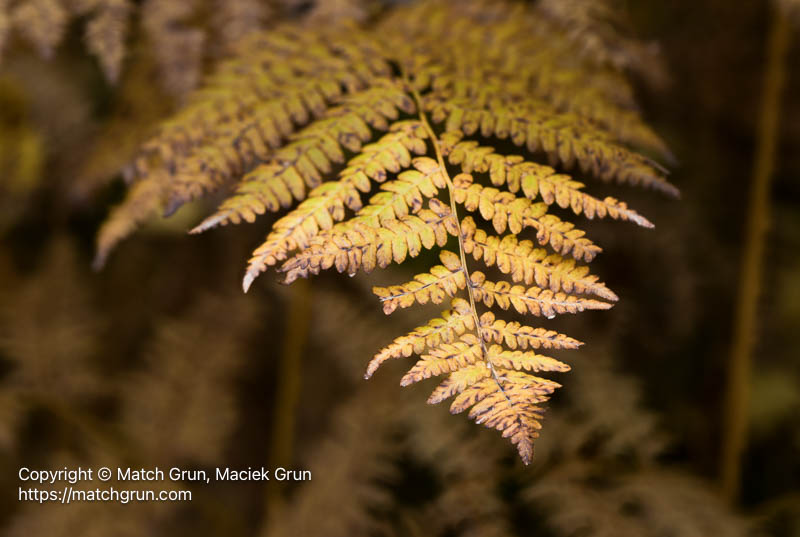
I searched around for another fern plant, for one that had caught two aspen leaves that had fallen from the trees above.
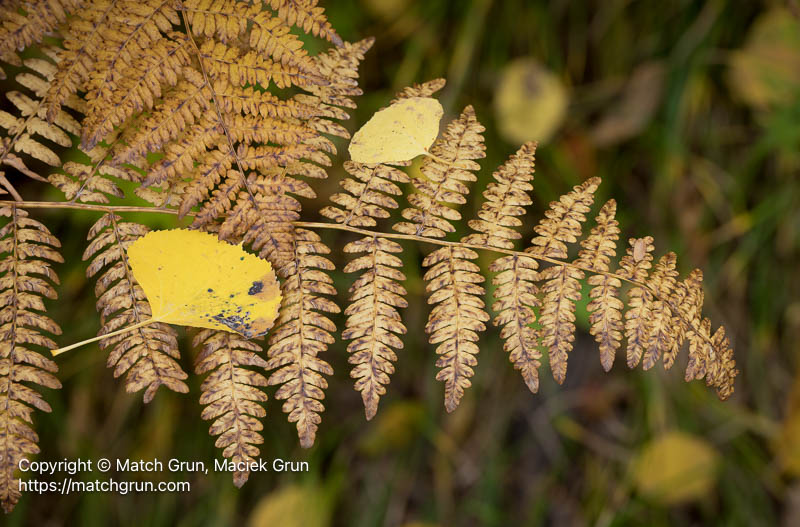
After this, I made my way over the pass and made a return trip home.

